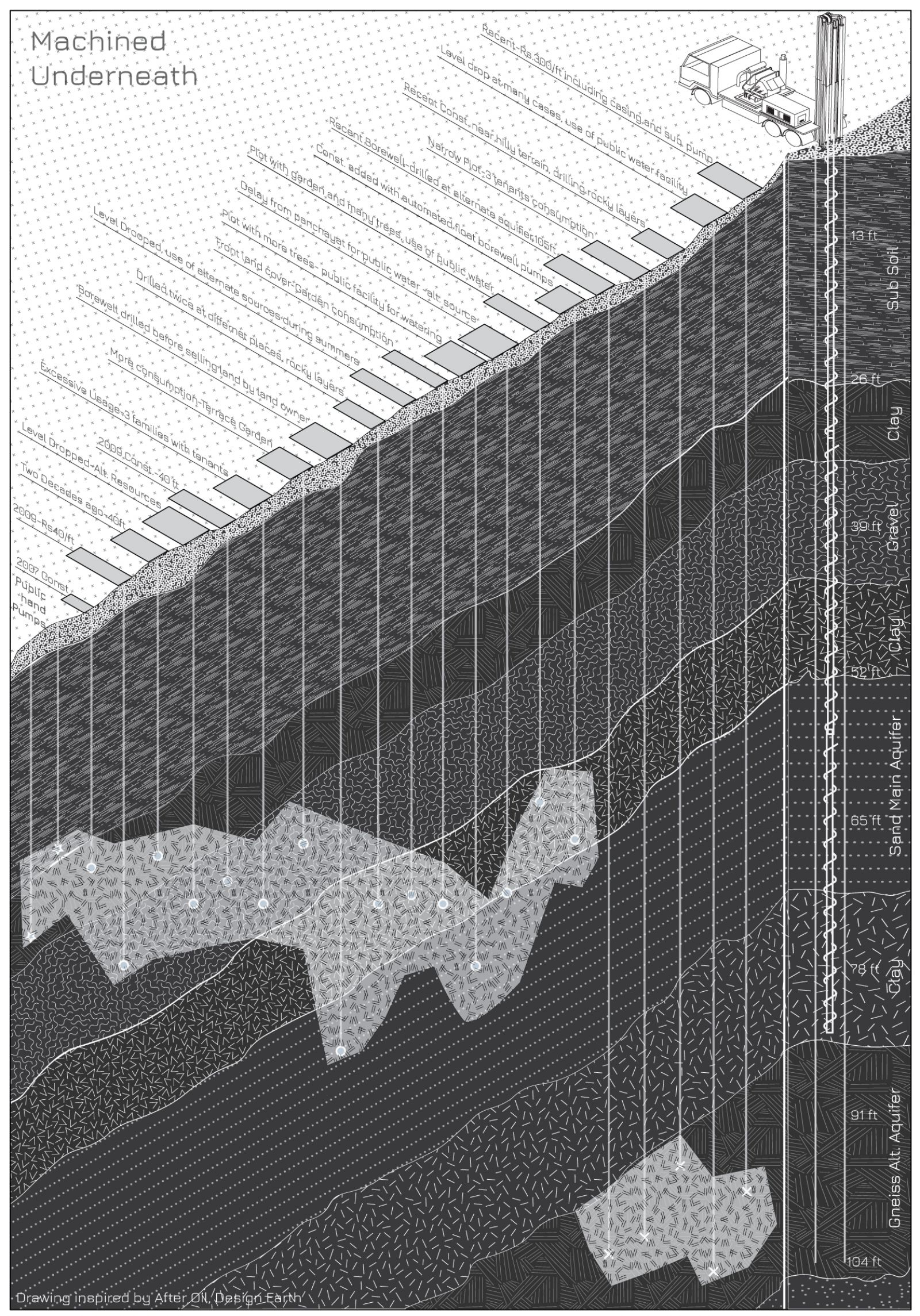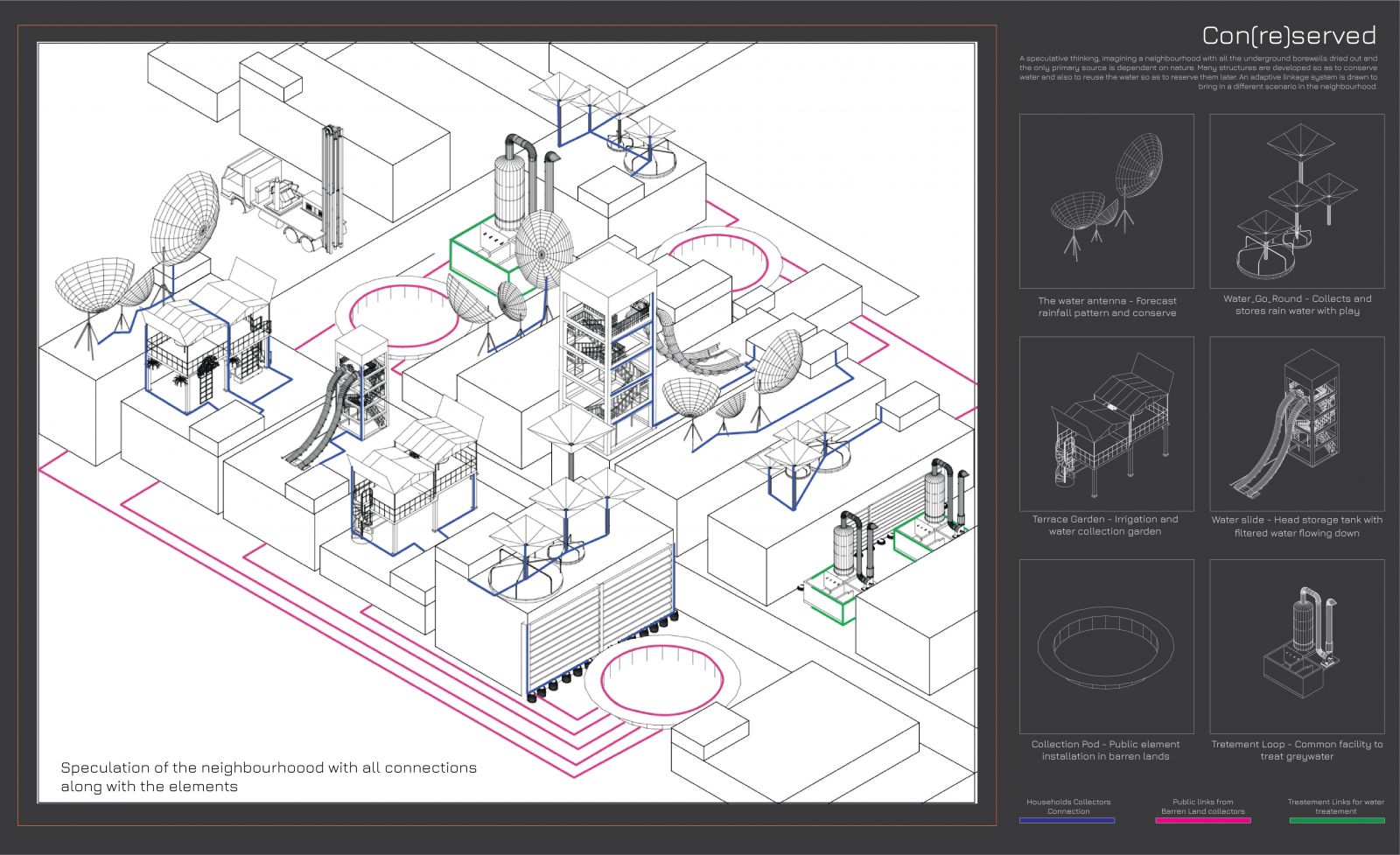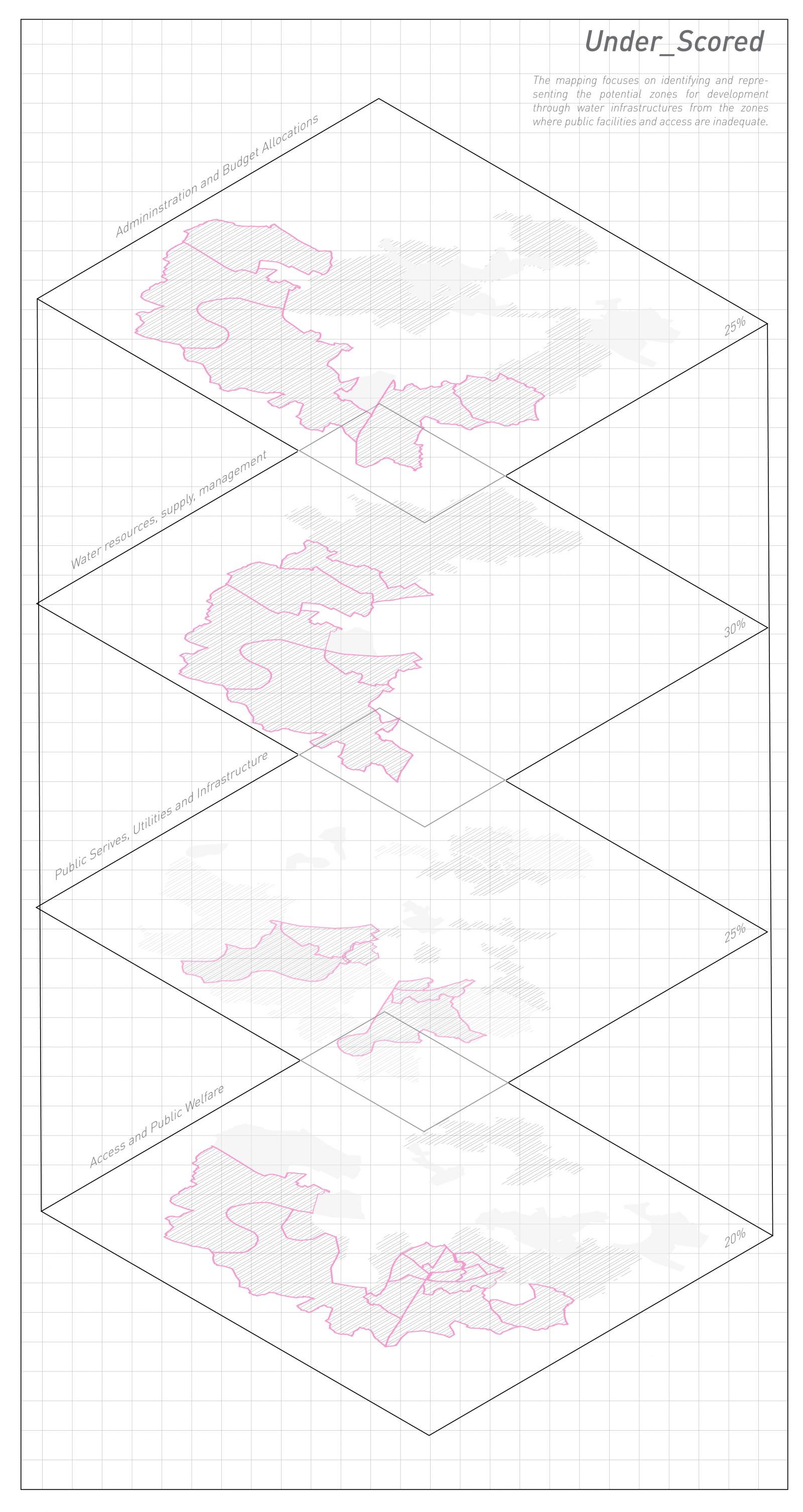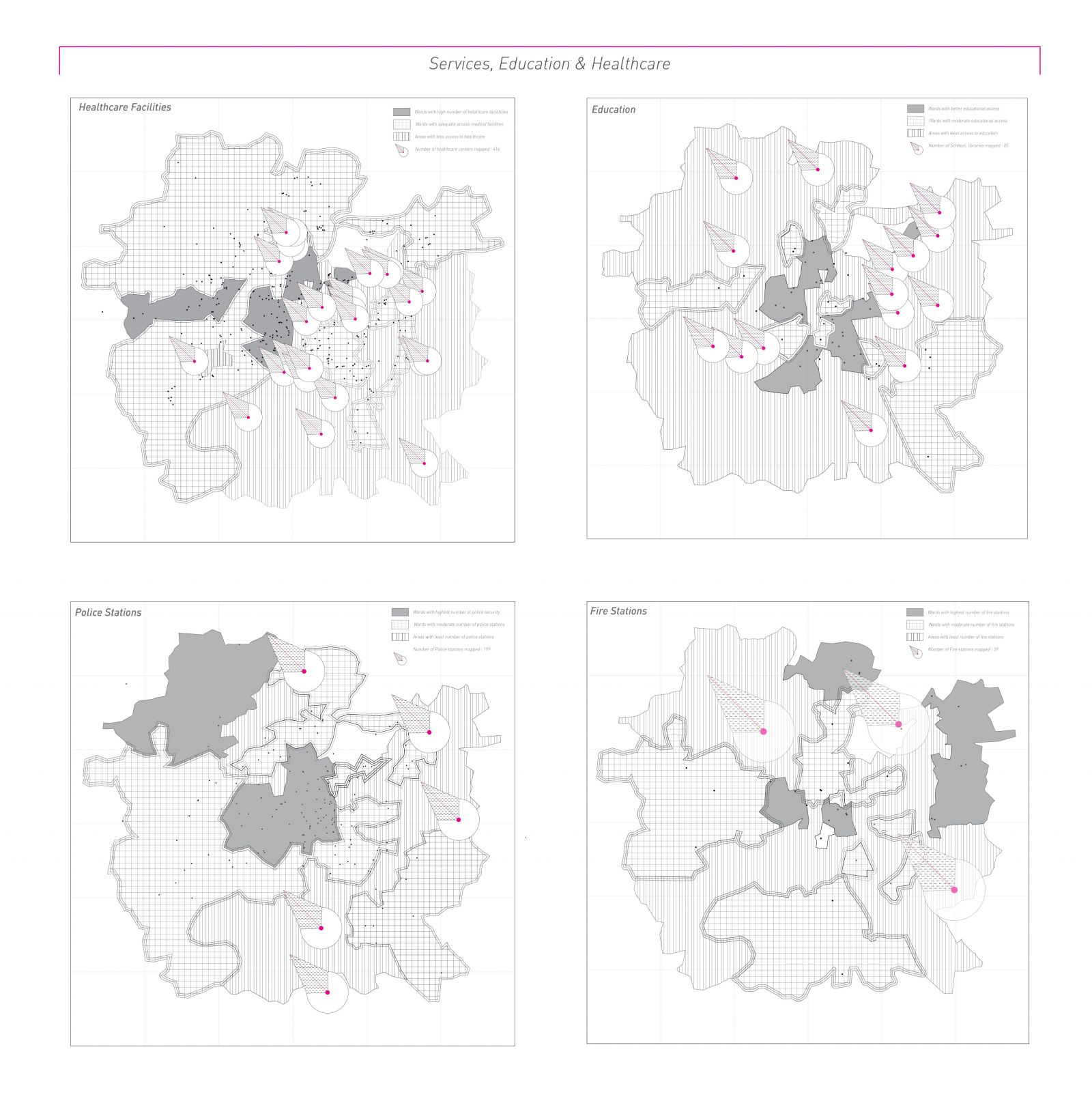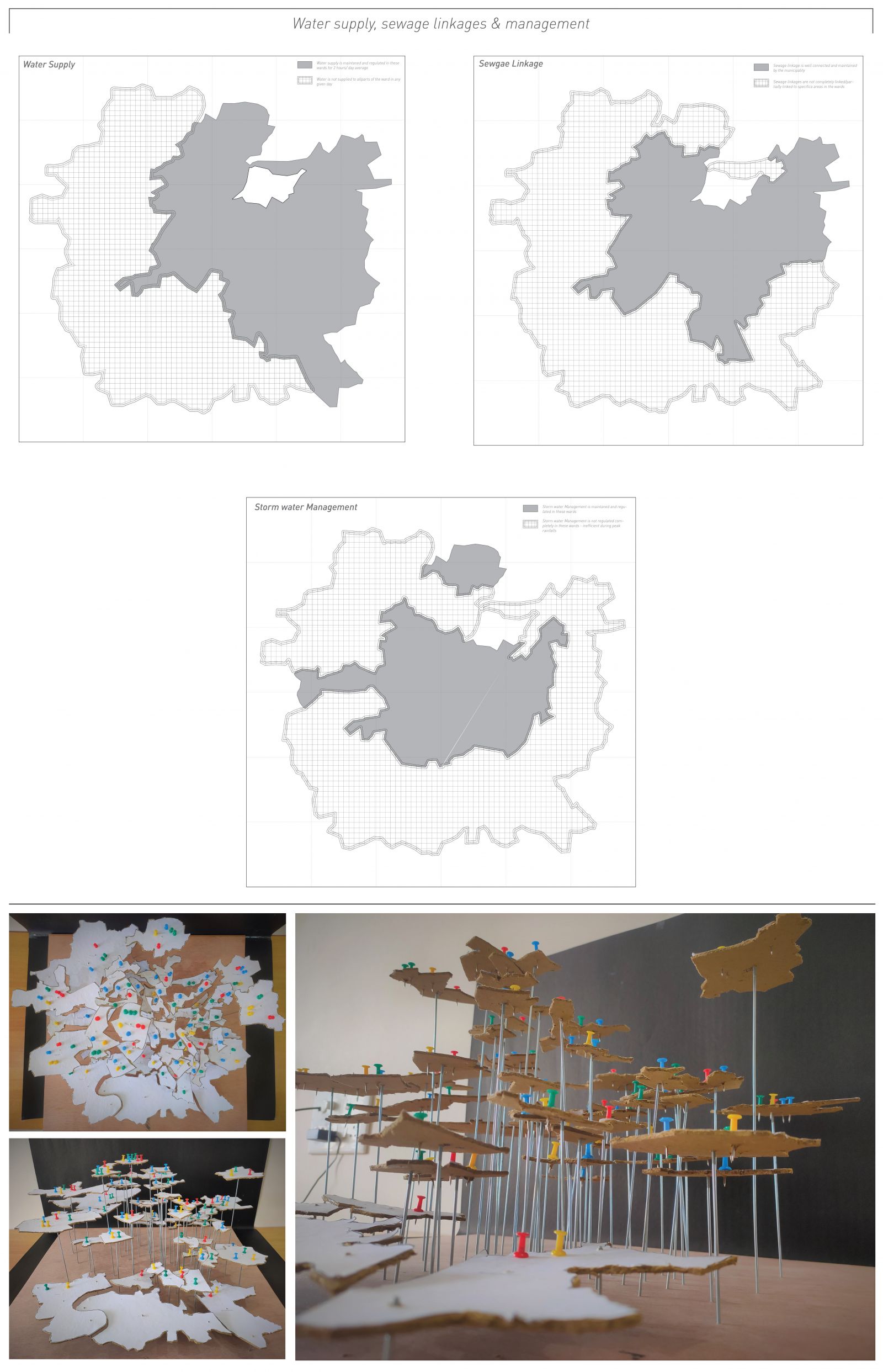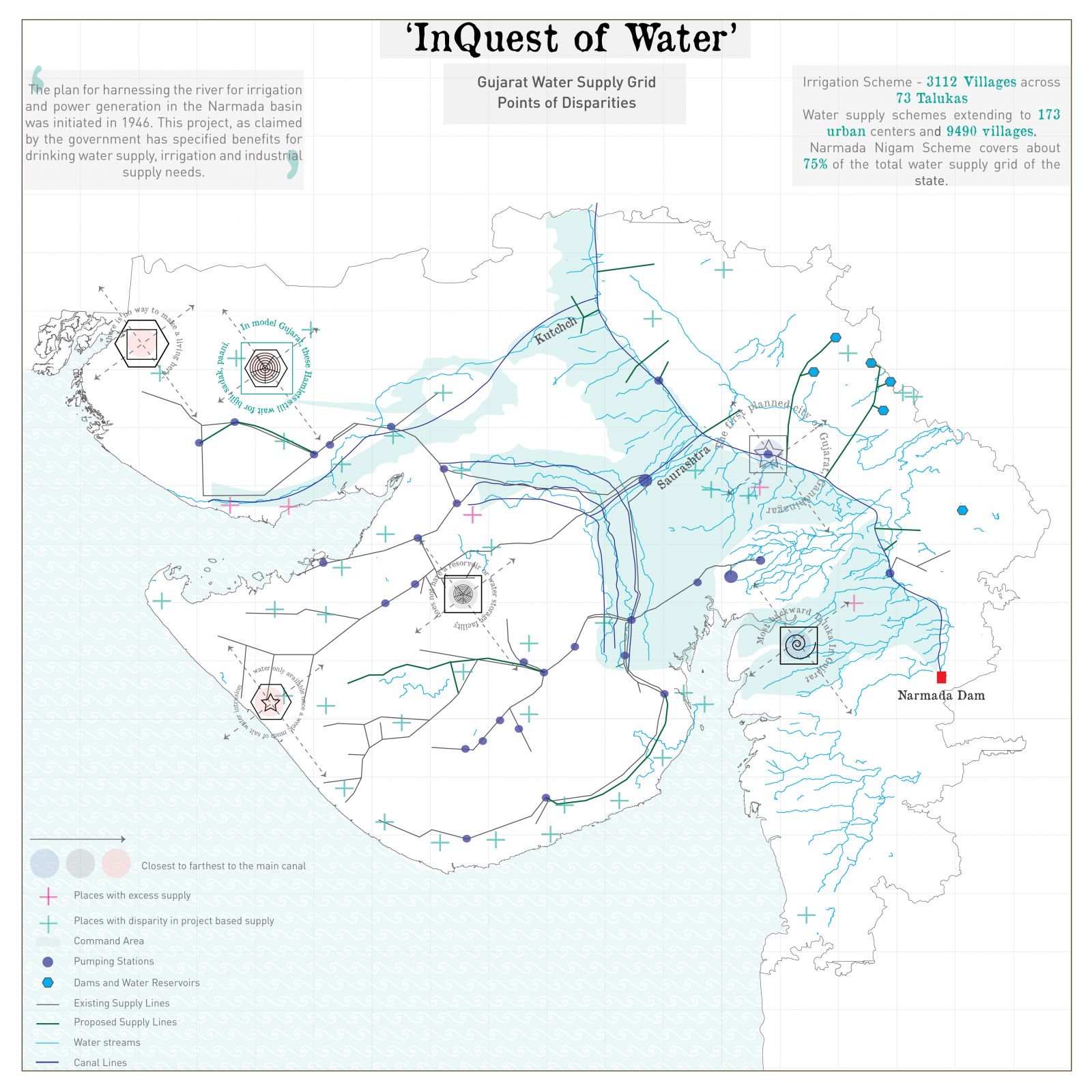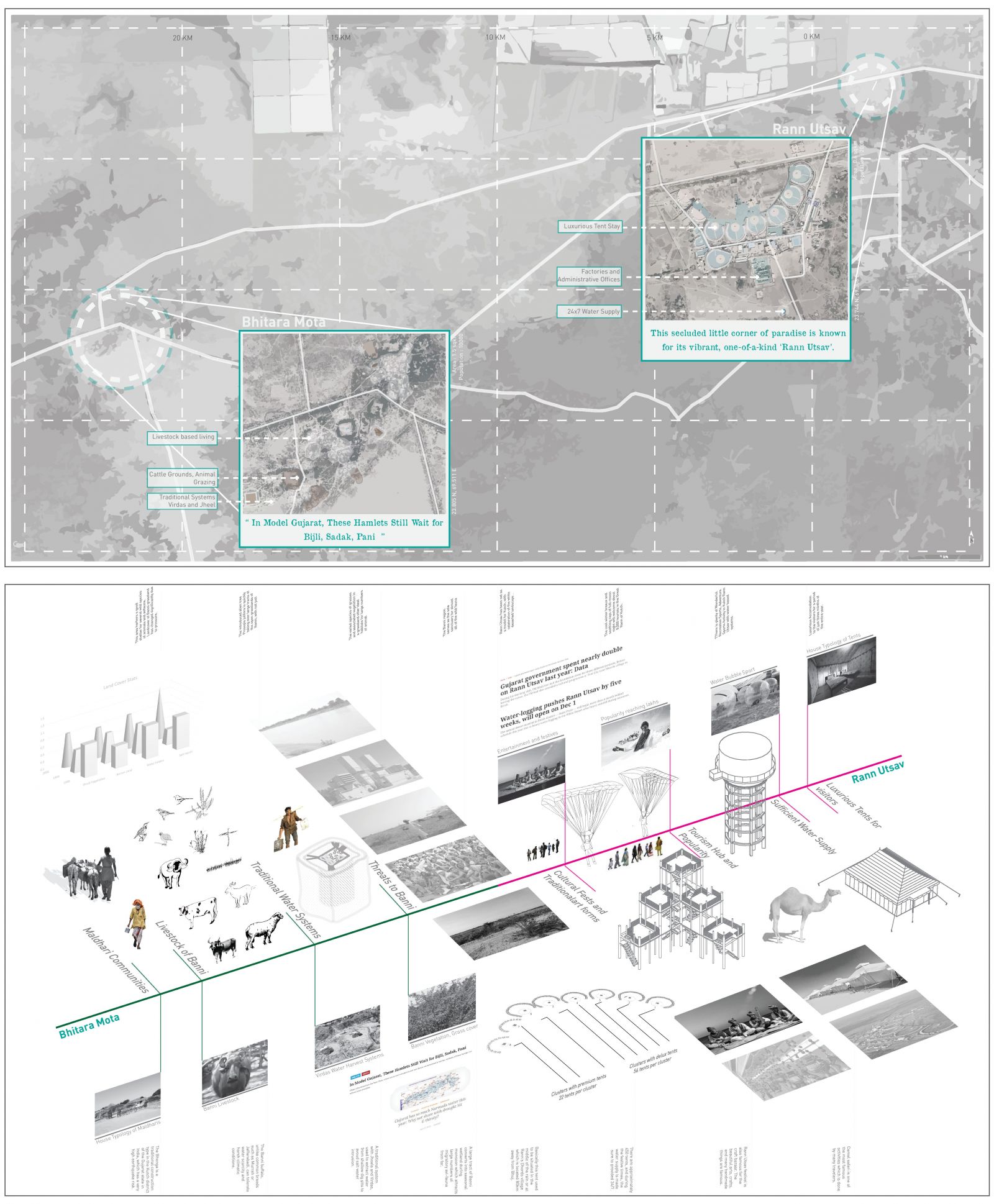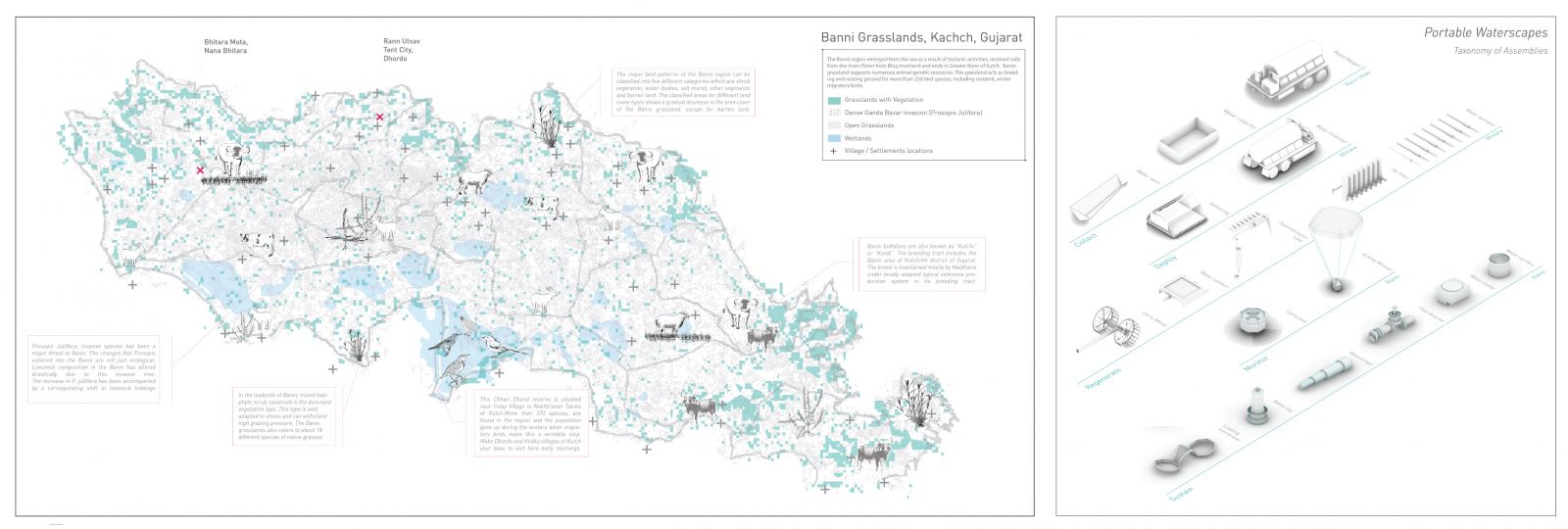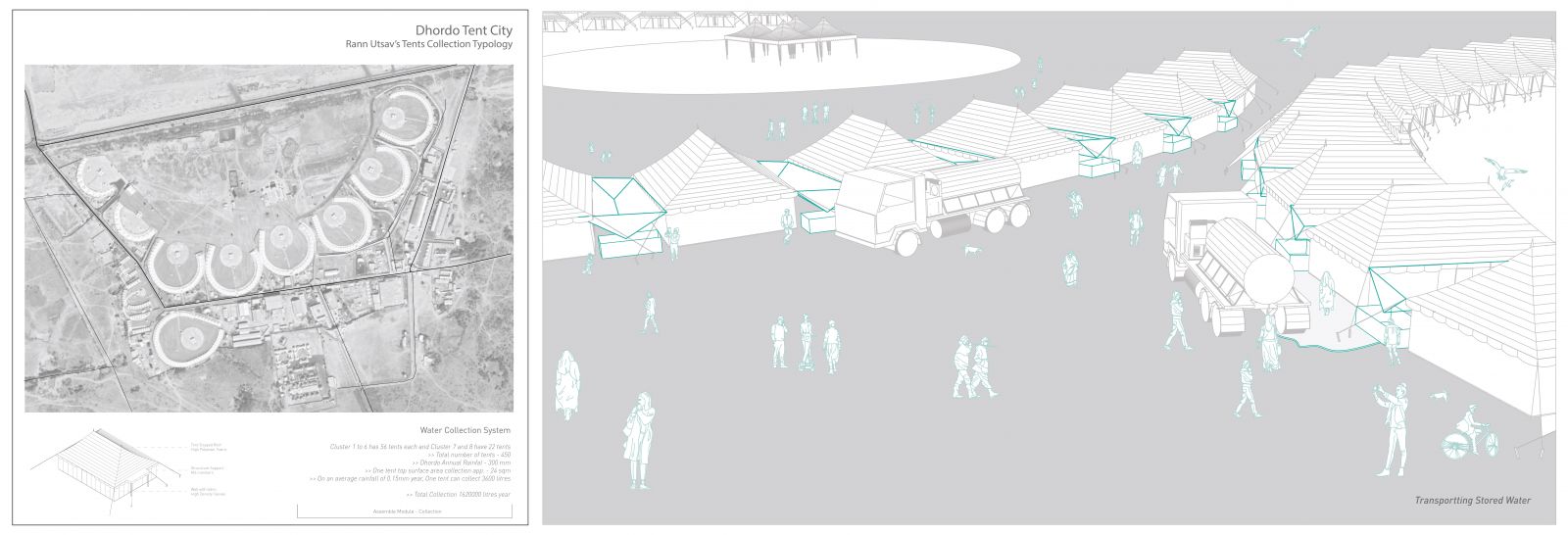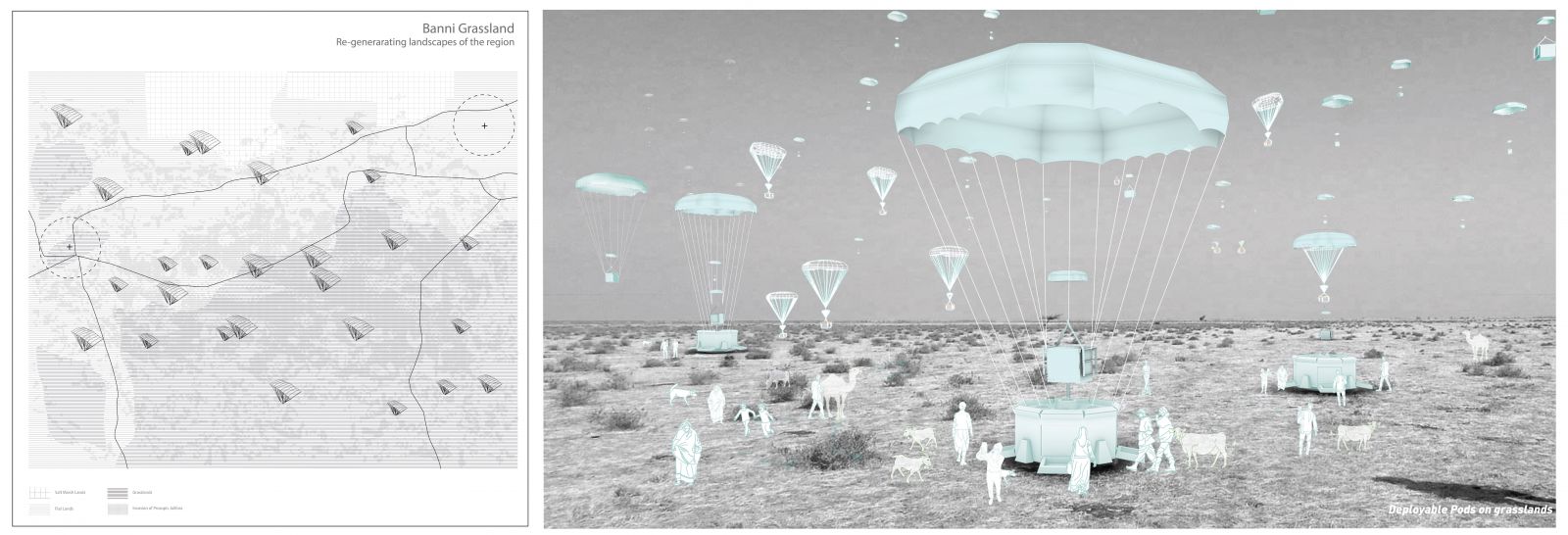Your browser is out-of-date!
For a richer surfing experience on our website, please update your browser. Update my browser now!
For a richer surfing experience on our website, please update your browser. Update my browser now!
“Portable Water scapes” is a project of discourse where a village Bhitara mota with noted disparity in the Kutch region of Gujarat is seen as opportunity to extend the possibilities of getting water infrastructure from the neighboring landmark, Rann Utsav that has been well developed and organized because of its political, geographical and economic influences. The villages are not just identified as places for intervention, but are also looked at as catalyst points to develop the neighborhood, its infrastructure and the landscape, provokes a different way of thinking and imagining conditions.
It also looks at imagining assemblies and scenarios for water portability as a way to revive landscape, provokes conditions on the notes of disparity in villages. It specifies imagination at ways to develop such conditions through water infrastructure, in all it focuses to re-think the disparities or at least bring in a point to converse about such cases.
